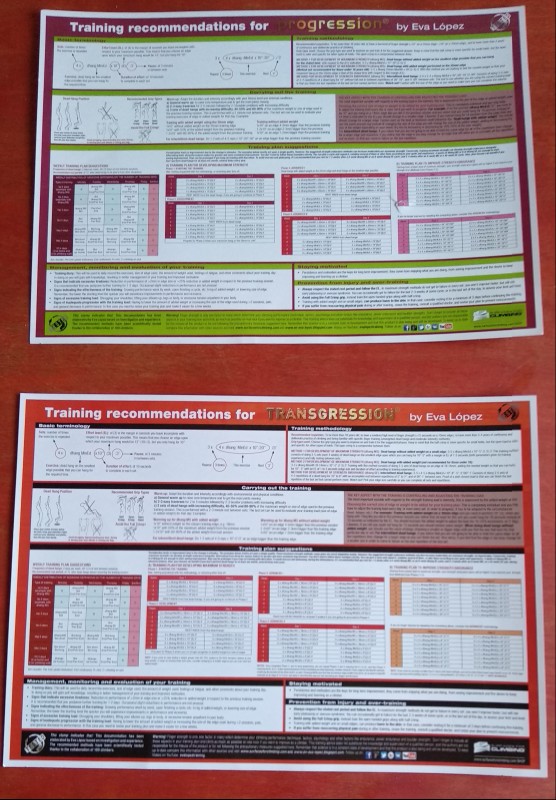Spanish version
It's been a while since I last updated this blog, and I've finally decided to do it for two reasons:
The first and foremost is the need to clarify some aspects that seem to generate a bit of confusion; these include the dead-hangs methods I put forward, together with a set of periodization schemes whose aim is to develop finger strength and endurance in climbers, both mid- and long-term.
The second motive is that I want the results of my latest research to be known to the public because, specially out of Spain, my name is associated mainly to finger maximum strength methods, those where we use the [near] maximum possible added weight (MAW) or the smallest (minimal) edge (MED).
With time, as my thesis can attest, I looked at the effects of intermittent dead hangs (usually known as repeaters) not only as a strength-endurance method, but also to gain strength via hypertrophy. This topic is present in my PH.D. thesis, in the training videos from my Youtube channel, the abstract that I presented at the most recent climbing congress and in the training guide that accompanies the Progression and Transgression hangboards. Why all of the above has gone under the radar is a bit of a head scratcher, but perhaps it is related to the first paper I published in 2012 that compared two maximum strength methods, or my first research and writing being about that same quality. No matter the reasons, it is understandable.
The next entries will try to fill the gap, discussing this method and its effects, and how to combine it with your maximum strength methods both during a cycle and in your long-term planning. I'll begin with an extended version of the paper I presented in the summer of 2016 during the III International Rock Climbing Research Congress that took place in Telluride (Colorado, USA).
In the meantime, here you have several intermittent dead-hangs programs that you can load in Complex Timer, the Android app that I talked about in an earlier blog post. You can download the app here, and then choose to install the beginner (A) program or the advanced (B) one or both, attending to these criteria:
a) your previous experience with intermittent dead-hangs
b) your current level of finger strength and endurance
By the way, these programs that you will have handy in your phone or tablet are part of the Training Guides bundled with each Progression or Transgression finger board, and a bit more current at that. And there are more coming.
Tutorial: how to install the Intermittent Dead Hangs Training Programs
1- If you don't have Complex Timer yet, download it from the play store.
2- Tap this link to access my training programs cloud folder.
3- Long tap the file you want and select the download icon from the pop-up menu:
4- Open Complex Timer and make a backup of your existing sessions or workouts first. Tap "Backup sessions" from the three-dots menu and they will be saved to /ComplexTimer/backups.
The app will ask for permission to access your phone's storage if you haven't already granted it, so do it now.
Browse to the location where you downloaded the training programs. In the example I downloaded them to Complex Timer’s “backups” folder, but very likely they will be in your Downloads folder.
6- A dialog will pop up asking if you want to delete the Sessions you already have; you'll probably want to choose "NO" here.
The app will ask for permission to access your phone's storage if you haven't already granted it, so do it now.
5- Back in the three-dots menu tap "Restore backup"
Browse to the location where you downloaded the training programs. In the example I downloaded them to Complex Timer’s “backups” folder, but very likely they will be in your Downloads folder.
6- A dialog will pop up asking if you want to delete the Sessions you already have; you'll probably want to choose "NO" here.
7- Now you have several 8-week programs (8 weeks is what is needed for this method to show effects. as we will see in the next entry), divided into 4 sub-levels (two for each level A and B) that are intended to perform in order. In this sense, I highly recommend you don't advance fast, but instead, you repeat several times each until you no longer see improvement.
If you already were training intermittent dead hangs now it'll be even easier; if not, you must first learn what this methodology is about and then start with level A1.
In the days to come we will extensively delve into this topic but, for the impatient among you, here are the most important bits of knowledge:
a) choose an edge size (depth) that allows you to honor the buffer or effort level set for each repetition, that has to be hard but no so much that you reach failure before the end of the session;
b) it is ideal to end the last repetition of the last set with failure or near failure. If you feel that you are getting exhausted too early switch to a bigger edge for the next repetition. If you have the opposite feeling, go for a smaller one, no matter if the set has not ended yet.
How do I find the right edge depth?
This varies from one individual to another, and from one time to the next. If you really want to progress you have to evaluate the conditions for each repetition, day and circumstances (meteorology, fatigue, skin, level, etc). But do not lose sight of the objective, that is completing all the proposed volume.
And now, let's work out!!!!
And now, let's work out!!!!
Download my training programs from the cloud store here















 https://orcid.org/0000-0003-0304-5290
https://orcid.org/0000-0003-0304-5290







